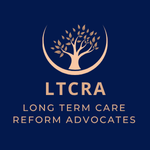ELDER ABUSE
What Is Elder Abuse (Elderly Abuse)?
Elder abuse, or elderly abuse, is defined by the CDC and Department of Justice as “an intentional or negligent act that causes—or creates a risk of harm to—an older adult” (typically aged 60 or older).
It includes physical abuse, emotional/psychological abuse, sexual abuse, financial exploitation, neglect, and abandonment. In nursing homes, these behaviors often constitute nursing home abuse or institutional abuse, occurring within relationships where trust is expected.
How Common Is It Nationwide?
- 1 in 6 older adults (15.7%) globally experienced some form of elder abuse each year, according to a World Health Organization review of 52 studies.
- In community settings in the U.S., ~10% of Americans aged 60+ report abuse. During the COVID‑19 pandemic, that rate rose to 1 in 5 older adults. Per National Council on Aging.
- Only about 1 in 24 cases of elder abuse are reported to authorities, highlighting widespread underreporting. Per National Council on Aging.
- The National Council on Aging estimates up to 5 million older Americans are abused annually, many in nursing facilities Nursing Home Abuse Center.
Nursing homes present even greater risks:
- Nearly 16% of nursing home residents report some form of abuse or neglect SeniorLiving.org.
- In 2023, nursing homes in the U.S. received 94,499 health citations, of which 8.1% (7,654) involved abuse, neglect, or exploitation Ballard Brief.
- Studies show 64.2% of nursing home staff admitted committing some form of abuse in the past year; about 40% admitted to psychological/emotional abuse Ballard Brief+World Health Organization.
- Depending on criteria, overall prevalence in facilities ranges from 13.9% to 25.8% for elder abuse, with psychological abuse in roughly 1–9% of residents PMC.
Additional troubling CDC data indicates that abuse victims have a risk of death three times higher than non‑victims, and elder abuse accelerates functional decline and psychological distress.
Signs of Elder Abuse & Reporting
Common indicators of nursing home abuse include unexplained bruises, withdrawal, weight loss, bedsores, missing medication, sudden financial changes, and poor hygiene.
If you suspect abuse:
- Contact your state’s Adult Protective Services (APS) or call local authorities.
- Use the elderly abuse hotline in your state, or the federal Eldercare Locator (1‑800‑677‑1116) to connect with support service
Why It Matters and How We Help
With projections indicating a doubling of the global 60+ population by 2050, the number of potential victims could swell to ≈320 million worldwide if rates remain unchanged. Despite legal protections like the Elder Abuse Prevention and Prosecution Act of 2017, gaps in enforcement, staffing shortages, and underreporting persist.
The Long Term Care Reform Advocates (LTCRA) fights nursing home abuse in Delaware through:
- Advocacy for stronger legislation and oversight—pressuring lawmakers to tighten rules and improve accountability in long‑term care facilities.
- Amplifying survivors’ stories, including families affected by tragic neglect or abuse, to raise public awareness.
- Partnering with local and state systems, such as APS, to promote better training, mandatory reporting and enforcement.
- Providing guidance on elder abuse definition, recognizing abuse, and how to contact an elderly abuse hotline or APS.
Led by Robert Stewart, LTCRA offers resources and support for families navigating elder abuse concerns. By demanding dignity, safety, and reform, LTCRA works to ensure no Delaware family has to face elder abuse alone.
